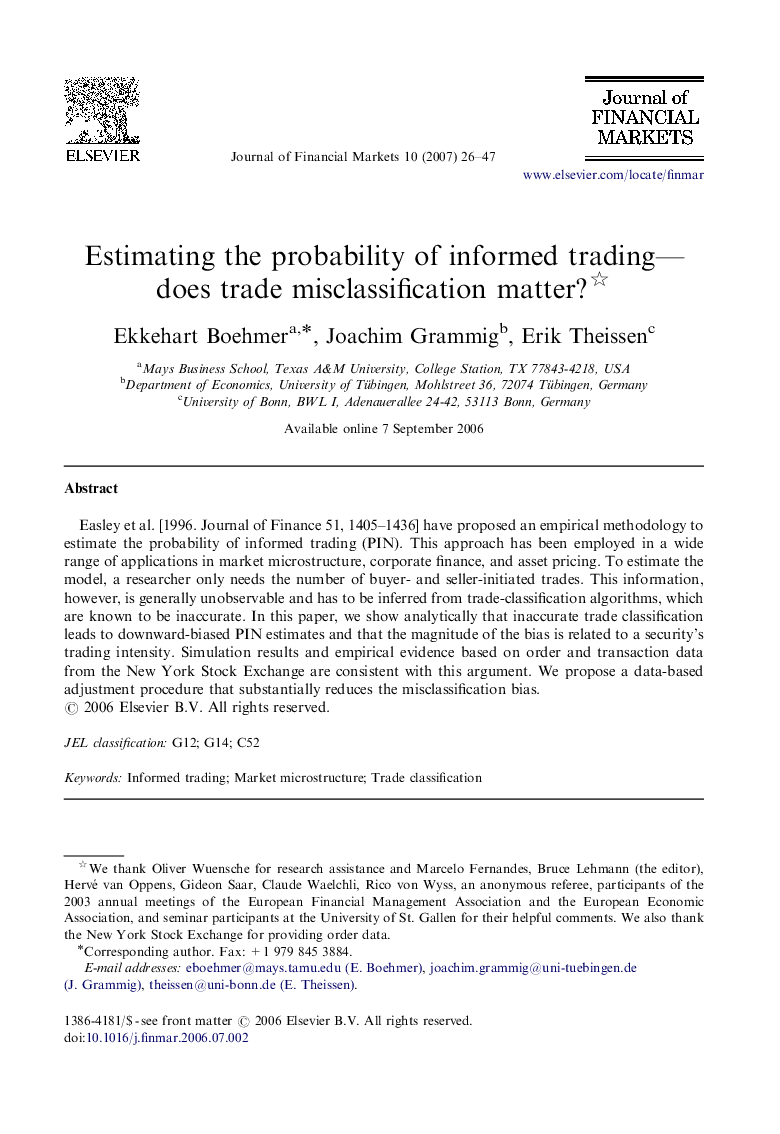| Article ID | Journal | Published Year | Pages | File Type |
|---|---|---|---|---|
| 961078 | Journal of Financial Markets | 2007 | 22 Pages |
Abstract
Easley et al. [1996. Journal of Finance 51, 1405-1436] have proposed an empirical methodology to estimate the probability of informed trading (PIN). This approach has been employed in a wide range of applications in market microstructure, corporate finance, and asset pricing. To estimate the model, a researcher only needs the number of buyer- and seller-initiated trades. This information, however, is generally unobservable and has to be inferred from trade-classification algorithms, which are known to be inaccurate. In this paper, we show analytically that inaccurate trade classification leads to downward-biased PIN estimates and that the magnitude of the bias is related to a security's trading intensity. Simulation results and empirical evidence based on order and transaction data from the New York Stock Exchange are consistent with this argument. We propose a data-based adjustment procedure that substantially reduces the misclassification bias.
Related Topics
Social Sciences and Humanities
Economics, Econometrics and Finance
Economics and Econometrics
Authors
Ekkehart Boehmer, Joachim Grammig, Erik Theissen,
